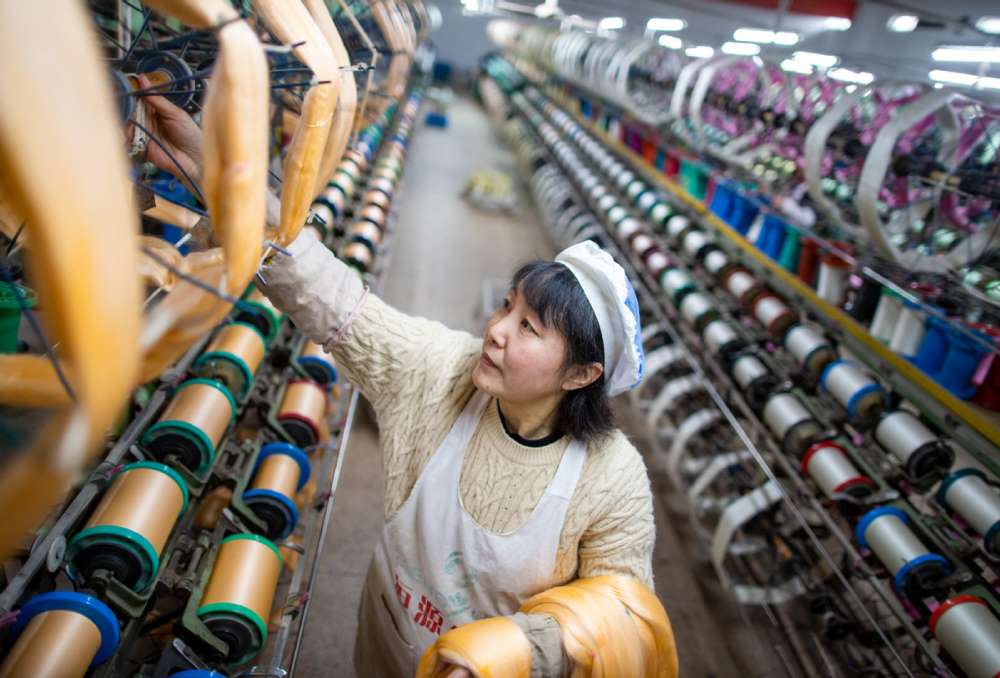
China's dominance in the global yarn market was reaffirmed recently by the Shanghai Yarn Expo, which drew international participation from March 6 to 8. However, the post-Covid era has brought significant changes to the industry, presenting both challenges and opportunities.
Challenges for China
Rising costs of yarn imports: Global raw cotton prices have surged, leading to a significant increase in imported yarn prices, particularly cotton yarn. A report by Textile Exchange indicates a 25 per cent increase in cotton prices year-on-year (YoY) as of December 2023. This trend is expected to continue in the short term, outpacing domestic yarn price hikes in China.
Falling profits for overseas mills: High cotton prices are squeezing profits for yarn mills in countries like Vietnam and Pakistan, traditionally major exporters to China. "We're seeing Vietnamese mills struggling to maintain margins," said a yarn manufacturer at the recent Yarn Expo in Shanghai, highlighting the need for these mills to find alternative markets or transition to blended yarns.
Resistance to high-cost yarn in China: Downstream Chinese weaving mills, which use yarn to produce fabrics, are hesitant to accept the high prices of imported yarn. This resistance could lead to a shift towards domestically produced yarn. The high import prices are simply not sustainable for our production," said a representative of a Chinese weaving company. "We're looking at domestically produced yarn more seriously now.”
What it means for China, India and Pakistan
China: Downstream mills in China might prioritize domestic yarn or delay purchases, waiting for import prices to stabilize. This presents an opportunity for domestic yarn producers like Shanghai DiW, which have ramped up production and can offer competitive pricing. However, high domestic cotton prices remain a challenge. We've seen a significant increase in demand for our yarn lately," says a spokesperson for Shanghai DiW, "particularly due to the price advantage compared to imports." While domestic yarn prices initially rose, they have since corrected, making them even more attractive.”
India & Pakistan: These major yarn exporters face dampened demand from China, their primary market. While some Indian mills are offering yarn at break-even prices in hopes of tax benefits, Pakistani mills might have a temporary buffer due to earlier export orders placed before the price hike. However, the overall reduced demand from China is impacting their current export opportunities.
Others: Yarn exporters from Vietnam and Indonesia are also feeling the pinch of rising cotton prices. These countries are now exploring alternative markets or focusing on blended yarn production to stay competitive.
Emerging opportunities
Cost-effectiveness is king: Both domestic and overseas mills are prioritizing cost-effective production. This focus has led to increased competition and a rise in the popularity of domestically produced yarn in China, particularly Xinjiang cotton yarn, which offers a price and quality advantage.
Diversification and innovation: Overseas mills are exploring blended yarn production and niche markets to differentiate themselves. This trend allows them to cater to specific customer needs and potentially command premium prices.
Technological advancements: Domestic yarn producers like Shanghai DiW are investing in advanced equipment to reduce production costs and improve efficiency. This focus on innovation will be crucial for maintaining competitiveness in the long run.
The shifting yarn landscape in China presents both challenges and opportunities. While rising cotton prices pose a threat to profitability, the industry is adapting with a focus on cost-effectiveness, diversification, and technological advancements. These trends will likely shape the future of the global yarn market.












